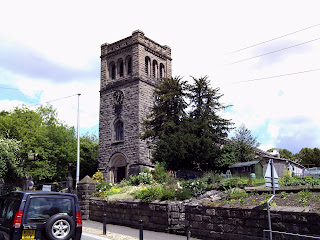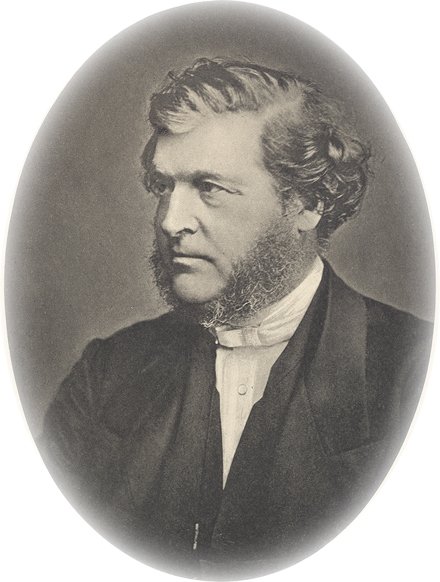
It was one of my regrets in Seminary that I missed the first lecture on Christian Ethics, and was therefore unable to use the joke that I had memorised for the occasion, namely, "What is a lawyer's definition of ethics? The county immediately to the north of London". While the absence of the joke was undoubtedly appreciated, the subject is one that is of great importance - what is the distinction between right and wrong, and how can we know it?
Local pastors are usually, like General Practitioners in medicine, expected to know a little about everything, which means we are rarely masters of any one topic - which is probably a good thing, as specialists in one field are often supremely (and dare I say all too often invincibly) ignorant of others. Now, there are many good works on Christian ethics out there, and one blog post cannot hope to cover the field in anything like a comprehensive way, which rather conveniently exempts me from trying to do so. Rather, I want to ramble on about a topic that is of great importance in the moral debates of our day; namely, the source of our ethics.
The great moral debate of our day, at least in public, is that of same-sex marriage. It is not a debate so much because there of a prevalence of doubt on the matter, but because of two vehemently opposed certainties. On the one hand there is the certainty of the orthodox Churches, that it is entirely wrong, and on the other hand the certainty of the liberal social elite that it is entirely right, even a fundamental human right.
In debate, it seems that the two sides are often talking past each other - quite often because they are; they are trying to appeal to the undecided middle, knowing that the other side is quite unwilling to be convinced. But even when the debate is between two persons, there is often a complete inability to understand the other's argument. Now, when I say "understand", I do not mean "agree with". There is another problem entirely, the idea that one cannot understand another's position without affirming it to be correct, but I digress. The fact is that the reason why the differing parties cannot agree is, as the wit once said about the two fishmongers arguing across the street, "Because they are arguing from different premises."
The problem, as I see it, is one of authority; what is the source of our morality? Generalising enormously, but necessarily, we can identify three different views on the matter: The first is the view we may call the T
ranscendent, that morality is determined by an authority outside of man. The other two views are
Immanentist, that morality is determined by man. The first of these is what we may call the
Societal, morality is determined by society. The second is the
Individualist, that morality is a matter of personal choice and values. Again, over-generalising to an almost criminal extent we may describe the first as pre-Modernist, the second as Modernist, and the third as Postmodernist. Before the Enlightenment most people held that morality was
Transcendent, that God determined what was right and wrong. The primary example of this would be the Decalogue, the Ten Commandments, "God spoke all these words..." The Enlightenment led to the idea of morality as a social construct, rules mutually agreed upon by a society. The Postmodern philosophers and their disciples, however, criticised this as an act of power, the dead hand of the past imposing itself upon the people of the present, or the social elite imposing its will upon the powerless.
Where we are today in the West is in fact somewhere between the two different Immanentist views of morality, and this is where the conflict lies. Despite the oft-repeated saw that "you cannot legislate morality", many of our laws are attempts to do just that, and they always have been. Most people do not object to efforts to legislate their
own morality, just efforts to legislate moral ideas and ideologies they do not agree with. Now, if there is one area of morality that the semi-postmodern society regards as entirely beyond not only the reach of law but also of criticism, it is sexual morality. The problem is that marriage is precisely the state declaring that certain forms of sexual conduct are more favoured than others - which is why marriage has a particular form. The language of "Marriage Equality" has been adopted by some campaigners for same-sex marriage, quite ridiculously, given that they will vehemently deny that they wish polygamy and polyandry to be legal. If sexual morality is truly merely personal, then the state should have no concern in the matter at all apart from protecting the vulnerable from abuse. Marriage, in a consistently Postmodern view of sexual morality, should not be a concern of the state at all.
On the other hand the Christian argues from entirely different premises; that we do not get to decide what is right and good and what is, on the other hand, bad, but that we are the creatures of God, who has made us and who has made us in his own image. God's laws are not purely arbitrary, like the law that says you cannot exceed 70 mph on the motorway, they are the expression of God's character and of our nature. If I may put it reverently, God could not have given ten different commandments upon Mount Sinai. God stands above all of us, though he is also not far from any of us. He gets to decide what is right and good, we do not, no, not even if we are seated together in a place of worship and are elected representatives of the Christian people. The Church can neither condemn what God has approved, nor can it approve what God has condemned.
That is the state of the question. I would further argue that only from a Transcendent understanding of morality can we consistently critique others and ourselves (though not in that order). While the philosophers of the Enlightenment supposed that they were building their "rational moralities" on universal principles, we see far more clearly now that they were unconsciously reading Christian presuppositions into their analysis, and the idea of morality as decided by the society all too easily becomes morality decreed by an educated intellectual elite, which descends into nightmare in the Cambodia of Pol Pot. What is more, it cannot be consistently maintained, for a merely societal morality cannot critique a different society without assuming an unwarranted attitude of moral superiority. A purely personal understanding of morality is simply unworkable, as we all, however much we isolate ourselves, must live in society, and life together is impossible without a shared moral code, however rudimentary. But that is not my point here; rather that point is that until we realise that we are proceeding from radically different ideas about how we derive our morality, we shall never really be able to talk to those with whom we disagree.
 The gay marriage debate is one of the most acrimonious and unpleasant things around at the moment. One of the more amusing (to those with a warped sense of humour) aspects of it is the number of times that secularists say that religious arguments should not be brought to the table or given any weight. My response to this is, "why? I know that your argument is an excellent dodge to get your point of view passed without real debate or discussion, but why?"
The gay marriage debate is one of the most acrimonious and unpleasant things around at the moment. One of the more amusing (to those with a warped sense of humour) aspects of it is the number of times that secularists say that religious arguments should not be brought to the table or given any weight. My response to this is, "why? I know that your argument is an excellent dodge to get your point of view passed without real debate or discussion, but why?"






















